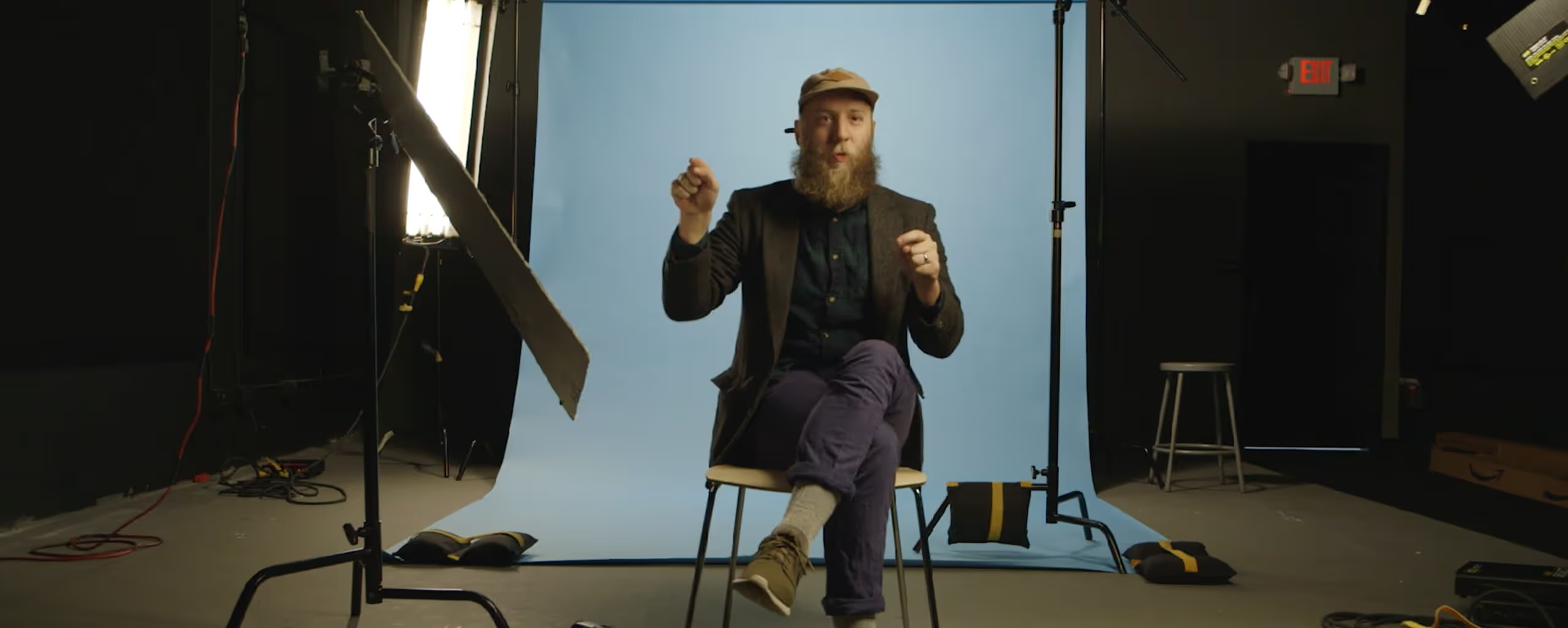Table of Contents
2026 update: Interview videos succeed less because of flashy production and more because of what’s actually being said. Audiences care about credibility, clarity, and relevance. Camera angles and lighting still matter, but only to support the message. Strong content carries the video; weak content doesn’t get rescued by production. Use angles intentionally to reinforce trust, authority, and focus, not to distract from the substance.
As a marketer, brand, or agency, creating high-quality video content is crucial for building brand awareness, increasing viewer engagement, and driving sales.
One of the most effective types of video content is the interview video, which allows you to showcase your brand’s personality, expertise, and values through the words of your team members or industry experts. However, shooting an interview video requires more than just pointing a camera at your subject and hitting the record.
To make your interview video stand out, you need to be real and share absolutely killer content. If your product or service is not, the video won't make an impact.
A video is there to showcase what ever you do. That's it. If the subject is not really interesting, it won't matter how "flashy" you shoot.
In this article, we’ll explore 10 camera angles for filming corporate videos and when to use them.
Shooting interviews - Eye line
When shooting interview videos, one important aspect to consider is the eye line and eye level of the subject being interviewed.
Eye line refers to the direction in which the interviewee is looking, whether it be directly into the camera or off-camera towards the interviewer or some other point of interest.
Eye-level, on the other hand, refers to the height at which the camera is positioned in relation to the subject's eyes.
The eye line and eye level can have a significant impact on the tone and mood of the interview, as well as the viewer's perception of the interviewee.
When deciding on the eye line for your interview, consider the tone and message you want to convey.
If you want to create a sense of intimacy and connection with the viewer, direct eye contact with the camera can be effective.
If you want to create a sense of authority or dominance, a camera positioned lower than the subject's eyes can be effective. However, it is important to use these techniques carefully and with intention, as they can also create unintended effects.
In addition to the eye line and eye level, the background of the shot can also play a role in the overall effect of the interview. A cluttered or distracting background can take away from the focus on the interviewee, while an interesting or relevant background can add depth and context to the interview.
Camera Angles for Corporate Videos and When to Use Them
There are a few reasons why camera angles are important when shooting. The angle you choose can increase tension or decrease tension in your video, affect the viewer's perception of the subject, and can even affect the mood of the interviewee.
Below are ten angles to consider when shooting interviews.
1. Low Angle Shots
Low angle shots are a great tool for making the interviewee appear more powerful or dominant. This angle is often used when you want to make the interviewee appear more dominant.
To achieve this angle, position the camera slightly below the interviewee's eye level. As you can see below, the camera is a bit lower than the eye level of the interviewee which makes him more credible. Since he is actually a doctor we wanted to use an angle like this.

2. High Angle Shots
High angle shots have the opposite effect of low-angle shots. They make your subject appear vulnerable and powerless.
This camera angle is shot from a high position, looking down at your subject. It’s ideal for interviews with employees or team members who want to share their personal stories or experiences.

3. BTS (Behind the Scenes)
BTS shots are a great way to give your viewers a behind-the-scenes look at your brand. This camera angle is shot from a distance, capturing the subject and the surrounding environment. It’s ideal for interviews showing the set to show that this is a set.

4. Bird’s Eye View Shots
Bird’s eye view shots are shot from a high angle, looking straight down at your subject. It’s ideal footage for showcasing how your subject interacts with products or equipment. The example below focuses the lens on the photos of the interviewee with one camera.

5. The Large Room
Shooting in a large room, such as a conference room or an important room, can underline the importance of the environment. It’s ideal for interviews covering a location.

6. Straight into the Lens
Looking straight into the lens creates a direct connection between your subject and your viewers. It’s ideal for interviews with CEOs, managers, or industry experts who want to speak directly to their audience.
7. Long Sided Interview
A long sided interview involves shooting your subject from the side, capturing their profile. It’s ideal for most interviews.
8. B-camera Close ups
B-cam usually is a closeup of the A camera positioned a bit either left or right. Here is an example:

9. Fluid Flow Closeups
Fluid flow closeups involve moving the camera around your subject in a smooth, flowing motion. It’s ideal for showing the hands, looks, or doubts of the interviewee.
Decide on Your Camera Setup
Before shooting your interview video, it’s important to decide on your camera setup.
- Will you be using a tripod or a handheld camera?
- Will you be shooting with a single camera or multiple cameras?
- Will you be using natural or artificial lighting?
These decisions will affect the overall look and feel of your video, so it’s important
What are your typical suggestions?
Each video is about a unique product or service so there are no one-size-fits-all suggestions.
- Certainly making the background interesting is important
- Using 3-point lighting (main light, fill light, and backlight) can help you deliver a "safe" interview.
- Also using a traditional medium on the main camera and close-ups on B-cam, again can help you deliver safely.
- A great interviewer can 10x the content you create
- Keep your lenses clean
- If possible Stick to your story/questions.
- While interviewing the speaker, pay attention to your sitting, do not slouch.
- Watch the recent take. Shoot again if needed.
Conclusion
Ultimately, the key to a successful interview video is to carefully consider all aspects of the shot, from the camera setup and angles to the eye line and eye level of the subject.
With careful planning and attention to detail, you can create a powerful and engaging interview that captures the attention of your audience and effectively conveys your message.
In conclusion, interview videos are a powerful means of capturing interesting stories, but it's crucial to consider the subject and the background to ensure that they are compelling.
Typically utilizing a long-sided frame enables great a film. A second camera or "b cam" can also be useful to provide a profile shot or an off-center angle, while using different angles and frames such as shooting from the short side or wide room can keep the audience interested.
It's also important to sit at eye level with the interviewer and maintain focus to make the interview experience enjoyable for both the interviewer and interviewee.
By implementing these camera setups and angles, you can take your film to the next level and create captivating footage.
Looking to produce high-quality interviews for your brand, anywhere in the world? Get Camera Crew can help! Our experienced team will handle all aspects of production, from finding local crews to post-production editing. Let us help you create compelling content that will elevate your brand. Contact us now to learn more!
FAQ
What is the best camera for an interview shoot?
Visit our best camera for interviews guide here.
Why is it important to know how to frame an interview?
Proper framing of interviews requires certain knowledge. One reason is to capture the interaction between interviewers, while another is to ensure clear recordings that facilitate the analysis of nonverbal communication.
With the right framing, interviewees can focus on their speech and produce high-quality content.
What are the best angles for a video interview?
The best angles for a video interview are eye level or slightly above, and a slight tilt of the head can add warmth.
What is the best camera position for an interview?
The best camera position for an interview is at a 25-degree angle to the subject, with the interviewer's shoulder visible.
What is the best angle for a video presentation?
The best angle for video presentation depends on the content, but a straight-on shot with the subject centered is a safe and effective choice. It's important to consider lighting, sound, and background when selecting camera angles for any type of video.
Citation
Interview. (2023, February 27). In Wikipedia. https://en.wikipedia.org/wiki/Interview






